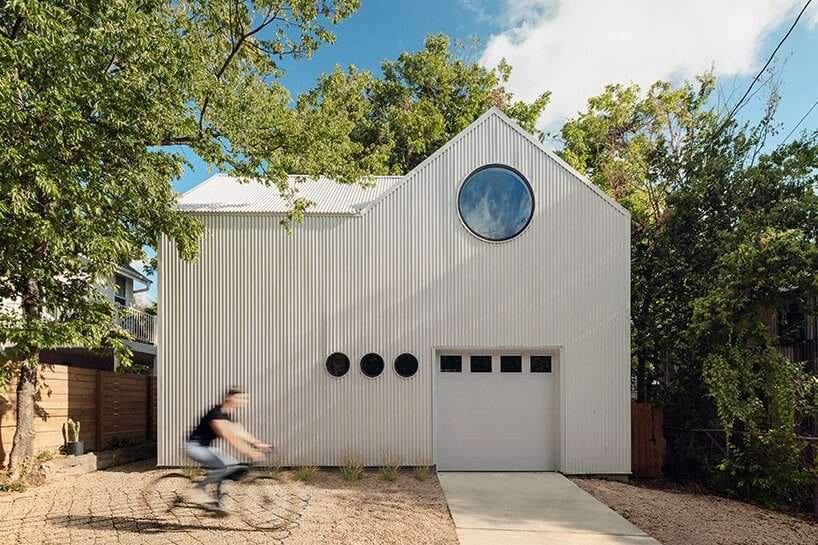Floating within the wetlands of Mountain View, Google’s gleaming new headquarters eschews the child’s play of Silicon Valley workplace design to achieve something more ambitious. The new campus was designed by BIG and Heatherwick Studio with sustainability in mind, as the effort aims for a LEED-NC v4 Platinum rating. The bold, curving lightweight canopy comes with an even bolder commitment to operate every hour of every day on carbon-free energy, as well as to replenish more water than it consumes by 2030—extending toward the community farther than Big Tech has before.

The table-like, two-story structure sits on 40 acres and the largest geothermal pile system in North America. The interior layout, while open, is arranged into neighborhoods and includes an events center as well as office space for 5,000 Googlers, all connected by accessible ramps. From the outside, the near-catenary canopies of overlapping gray roof scales are hard at work generating 40 percent of the building’s energy; their surface starkly contrasts with the deceptively simple and gleaming white underbelly of steel subframe.

When the roof was being assembled, the largest of three long-span canopy roof lifts set a record for the largest number of strand jacks used at one time in the Western Hemisphere (42). This lift combined 12 large bays of preassembled roof framing connected by 32 long-span “smile trusses.” The multilayered complex roof assembly weighed in at more than 2,600 tons of static load.
The manufacturer of the building-integrated PV roof panels is a Swiss company that originally developed its product to be harmonious with historical barn roofing. The allure of SunStyle’s frameless shingles was irresistible to BIG, Heatherwick Studio, and Google’s designers. “They were designed for farm or warehouse roofs. We needed to upgrade the shingles to handle curvature in both directions,” Christopher McAnneny, senior associate and project architect at Heatherwick Studio, told AN. The shingles are straight, but the team “effectively redesigned” their subframes to support them on a doubly curved substrate.

Each solar panel is approximately 35 square inches, and the specialized sandwich of laminated glass panels about a quarter of an inch thick. Despite this razor-thin appearance, the tempered glass means the panels are extremely durable, which is important given its need to be walkable for service. The textured glass, manufactured by Saint-Gobain, was redesigned both to accommodate the extensive thermal expansion of the region—nearly 2 inches—and to achieve peak electrical performance with double curvature. The Albarino patterned glass is sandwiched between the shingles and reduces reflectivity, important for Bay View in particular owing to its proximity to a small airport. This glass is commonly used for PV and solar thermal products because of its very low iron content, which in turn increases its light- and energy-transmission properties.
Significant customization was involved, including wider gaskets for seamless connections between the overlaid panels, a new interlayer of glass, and a standing-seam PV rail system. These advances reveal just how adaptable the Swiss solar shingles can be. Every photon of light is used: Sunlight either seeps through each clerestory window or is reused to generate 4 megawatts of power.

Given water scarcity concerns in the region, Google’s Bay View campus will meet 100 percent of the demand for nonpotable water as well as treat wastewater from neighboring sites and return it to the city. The roof’s rainwater harvesting helps put Bay View on track to become the largest building to receive the Water Petal certification from the International Living Future Institute’s Living Building Challenge.
As of this writing, the second phase of the project, dubbed Charleston East, is about four months away from completion. Like the prior structures, this effort hopes to showcase what Google offers as the future of the office.
Throughout, Heatherwick Studio and BIG cap their lofty workplaces with building-integrated photovoltaics, a move that deeply integrates sustainability into the success of the project.
Katie Angen is an architectural designer based in Los Angeles.

